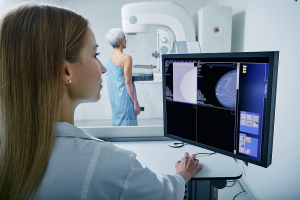by
John R. Fischer, Senior Reporter | June 28, 2023

Medality's 2023 Radiology Practice Development Report says providers should invest in digital training, certain medical imaging modalities, and peer reviewing to increase the number of subspecialists in radiology.
Because growing demands for subspecialty imaging are surpassing the number of subspecialists, the onus has fallen on general radiologists who, on average, read exams for 4.7 subspecialty areas, according to practice development platform Medality's 2023 Radiology Practice Development Report.
About 40% read across all imaging subspecialties, but many are not confident in their ability to accurately read subspecialty scans in high-growing areas like cardiac (41%), nuclear medicine (28%), pediatric (25%), musculoskeletal (23%), breast (22%), and head and neck (21%).
Here are three ways providers can change this:



Ad Statistics
Times Displayed: 46590
Times Visited: 1409 MIT labs, experts in Multi-Vendor component level repair of: MRI Coils, RF amplifiers, Gradient Amplifiers Contrast Media Injectors. System repairs, sub-assembly repairs, component level repairs, refurbish/calibrate. info@mitlabsusa.com/+1 (305) 470-8013
Invest in digital training
Rather than send radiologists to expensive conferences, providers should invest in online learning and simulation training for hands-on practice without time off and at a fraction of the cost.
“Radiologists are being asked to do more and more and more with much less time,” Medality CEO and co-founder Daniel Arnold told HCB News. His company offers remote mini-fellowships that radiologists and residents can do online from home.
Dr. Eric Rubin, FACR, chair of the American College of Radiology Human Resources Commission, says training should be “targeted, concentrated, and guided by the specific needs of a practice."
Prioritize MR training
Because of high relative value units, highly experienced radiologists never trained to read MR scans want to learn, especially in neuroradiology (97%), MSK (95%), genitourinary (91%), gastrointestinal (88%), breast (84%), and cardiac (81%).
Expand peer-review
About 1%-3% of studies in the U.S. undergo peer review, versus other countries where double reads are higher. In the Netherlands, all category B breast density mammograms are double read, according to Arnold. Learning from these nations may help reduce error rates.
The findings were based on a survey of over 2,700 radiologists from 108 countries.

